raddygast
Shiny_Rock
- Joined
- Oct 20, 2004
- Messages
- 179
This may seem like an unusual question. But take a look at the ring posted below.
Now, how much would such a setting impact the optics of the stone it enclosed, in terms of brilliance, dispersion, scintillation, and perceived color?
I thought that, in theory, with a perfectly cut stone (which we never get with colored gems), all the light that comes to our eyes has basically travelled in through the table and crown facets, gone through the gem, bounced off the pavilion facets, and back out through the crown to our eyes.
If that is the case, then, in theory, a full bezel setting will not affect the color, true? But I am inclined to think that there is quite a bit of light that enters in from the sides and so forth, though perhaps this never travels back out through the table.
Basically, I just want to get a theoretical idea about how much full bezels "swallow up" the beauty of a stone. Aesthetically speaking, I much prefer them to anything with prongs. A half-bezel is about as open as I''d be willing to go, and if I were going to use an oval, I would definitely go half-bezel as it opens up more of the gem and makes it feel more substantial, chunky, and weighty. But with an emerald-cut shape, I think full is the only option (if anyone has seen a semi-bezel for a square or rectangular-shaped stone, please forward me a link!)
Also, will the color of the metal actually affect the apparent stone color? I know that a ruby viewed on a gold plate will look redder, due to the gold absorbing more of the non-red wavelengths before bouncing it back out through the gem. But in most settings, the pavilion is free and clear under the prongs or bezel or whatever, is it not? So the metal color shouldn''t affect it.
I hope someone can give me some advice or assurance about this.
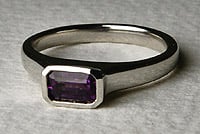
Now, how much would such a setting impact the optics of the stone it enclosed, in terms of brilliance, dispersion, scintillation, and perceived color?
I thought that, in theory, with a perfectly cut stone (which we never get with colored gems), all the light that comes to our eyes has basically travelled in through the table and crown facets, gone through the gem, bounced off the pavilion facets, and back out through the crown to our eyes.
If that is the case, then, in theory, a full bezel setting will not affect the color, true? But I am inclined to think that there is quite a bit of light that enters in from the sides and so forth, though perhaps this never travels back out through the table.
Basically, I just want to get a theoretical idea about how much full bezels "swallow up" the beauty of a stone. Aesthetically speaking, I much prefer them to anything with prongs. A half-bezel is about as open as I''d be willing to go, and if I were going to use an oval, I would definitely go half-bezel as it opens up more of the gem and makes it feel more substantial, chunky, and weighty. But with an emerald-cut shape, I think full is the only option (if anyone has seen a semi-bezel for a square or rectangular-shaped stone, please forward me a link!)
Also, will the color of the metal actually affect the apparent stone color? I know that a ruby viewed on a gold plate will look redder, due to the gold absorbing more of the non-red wavelengths before bouncing it back out through the gem. But in most settings, the pavilion is free and clear under the prongs or bezel or whatever, is it not? So the metal color shouldn''t affect it.
I hope someone can give me some advice or assurance about this.




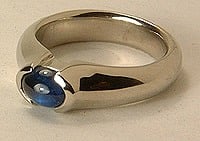

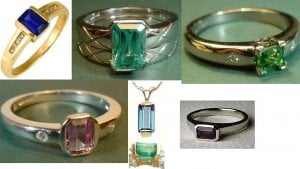

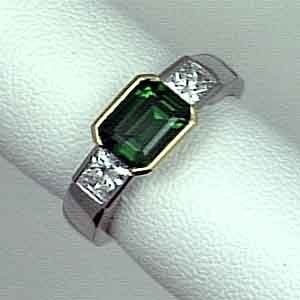
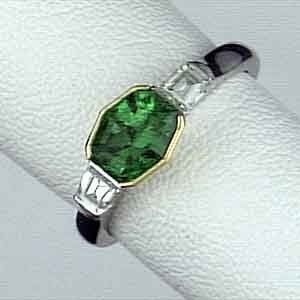
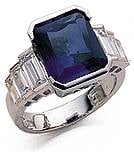


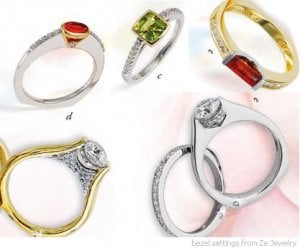


300x240.png)